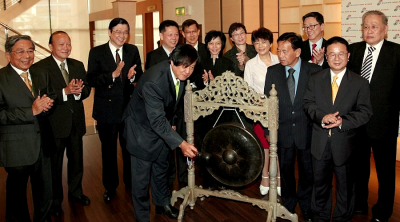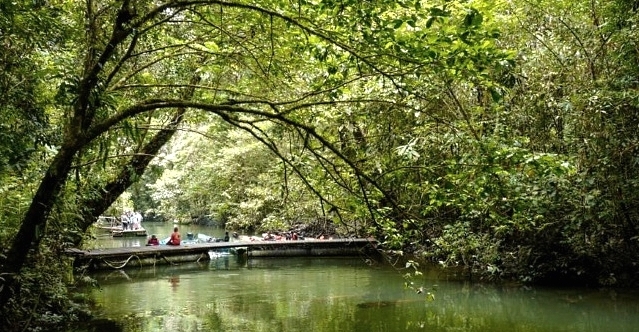
By Lee San
In late June, the two tour groups of some 60 members said they loved walking along the rainforest trails in Mulu National Park and be thoroughly cleansed by Nature. As a matter of fact, walking along the trails under the thick canopy of trees in age-old rainforest far far away from the hustle and bustle of the city and taking in the crisp mountain air infused with the aroma of fallen leaves could purge our soul and spirit from our worldly preoccupations. Although we walked more than 11km that day, the walk was not the least tiring. We became even more energized instead!
Along the way we straddled the creeks and listened to the chirps of birds and insects dwelling the thick forest, enjoying an out-of-this-world symphonic orchestra treat that lasted a whole two hours! On both sides of the trail we saw the very rare Rajah Brooke's birdwings, multicolored caterpillars, phasmids, millipedes, giant ants and many other creepy creatures wriggling joyously. The forest guide kept introducing to us the many species of trees: Meranti, Era, Belian, Benuang, Tapang and a host more. The most eye-catching was none other than Engkabang, whose fruit is a favorite among the freshwater fish in mountain streams. The rainforest was an eye-opener to people living in concrete forest like us. Every little step we made was like a giant stride towards the great wisdom, an unexpected ecological gain we reaped in this journey.
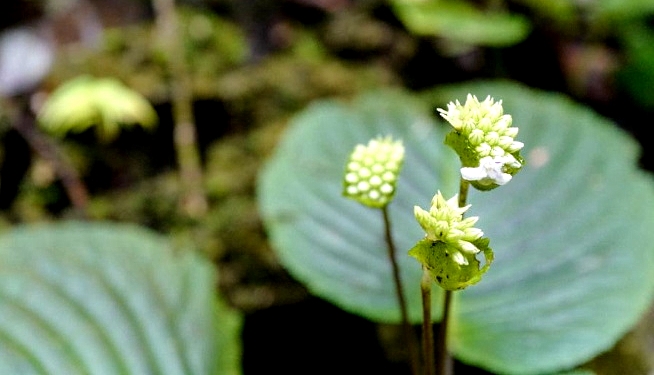
As we went on, we were pleasantly disturbed by the croaks of frogs that seemed to get nearer and nearer as we proceeded. Was that a mating message? And then we heard some hustles from afar. Could that come from the gibbon family? Looks like this 100-million-year-old virgin forest is home to countless of magnificent creatures, huh!
Our professional jungle guide, who is from the Perawan tribe, declared with a heightened tone: This Mulu National Park is an ecological treasure trove, especially the several millions of bats from 12 different species residing in the caves! There used to be wild deer here hunting for guano, the salt-rich excrement of the bats. I was thinking, there must be many unexplored natural treasures lurking deep inside the 2,376-meter tall Gunung Mulu towering in front of us!
I was told inside the caves there are endless stretches of stalactites and stalagmites, and over a hundred kilometers of subterranean rivers.
As we walked further ahead, I could instantaneously smell that it was getting really close to us! How exciting! Personally I was most looking forward to the natural profile of Abraham Lincoln lying slantingly in the Deer Cave waiting for the arrival of curious visitors from afar.
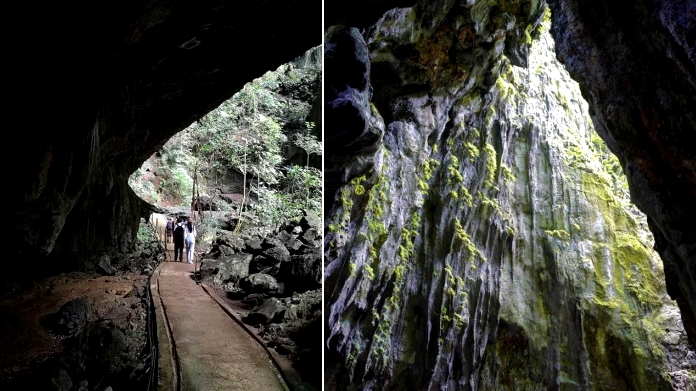
5.45p.m. in the evening, the grand show of Mulu rainforest was about to kick off! As we rested ourselves on the designated seating area staring at the sky while marveling at the natural landscape around us, a pall of smoke in the shape of a dragon-headed snake suddenly emerged from the Deer Cave, swiftly hovering to the sky like a dark wind: millions of bats were rushing out of the cave to hunt for their dinners! After pampering themselves with the insect feast, they would swarm back into the cave for a good night's sleep at around six in the morning. This routine takes place every day of the year with the exception of rainy weather. Today, I was feasted to the 25-minute marvel of an enormous colony of bats gushing out of the cave at dinner time, an unbelievable sight that even awed our locally born and raised indigenous jungle guide!
He told us it had been raining non-stop for several weeks and the starving bats seized the opportunity of the good weather now to go out hunting!
Nelson, the guide, went on: when his father and uncles assisted some 200 research fellows from the UK Royal Geological Society for exploration inside the thick tropical rainforests here between 1978 and 1984, they discovered countless of world-famous caves, one of them being the "Sarawak Chamber", the largest known cave chamber in the world spacious enough to accommodate 40 Boeing 747 jets, discovered in 1980. The bats that came out for food that day possibly numbered more than three million! Breathtaking, isn't it?

The thing is, we still need to make our way through the hills and forests for at least eight hours to reach the massive cave, not to mention crossing the 300-meter wide river and climbing with the cliff rope to reach this "world's most". Sure enough a prerequisite is that you must be physically fit enough to do it! I told Nelson I would make a date with him to explore this miracle once I have completed my fitness program one day.
Meanwhile we had to settle with taking the boat cruising upriver, four in a boat, winding its way up the Melinao River towards the Clearwater Cave. The scenery along the river was breathtakingly beautiful. The low tree branches were drifting in the current while the taller ones swayed graciously in the wind in the sunlight. Inside the water were jutting stones and decayed woods, a world teeming with life! On the river banks were Penan settlers who, we were told, have not seen a single "stranger" since the start of the coronavirus outbreak. Little kids frolicking in the water waved at us gleefully. I was thinking, their jungle guide fathers might have gone without any income for six months now! By right, the summer months from July to September should have been peak travel season in Mulu!
Obviously UNESCO appreciates a lot the natural assets of Mulu National Park and has issued a UNESCO World Heritage certificate for it, with the hope this recognition will inspire the indigenous peoples here to value and preserve the virgin forests and work in unison to enhance the value of the Earth's forest resources. One thing that needs to be stressed is that outsiders must be blocked from entering the national park for unchecked logging activities. In view of this, the Royal Geological Society will continue to be stationed here to explore the inner secrets of the forests which they claim still hold innumerable hidden caves! Unfortunately I didn't quite have the luck having rummaged through much of the Deer and Clearwater Caves!
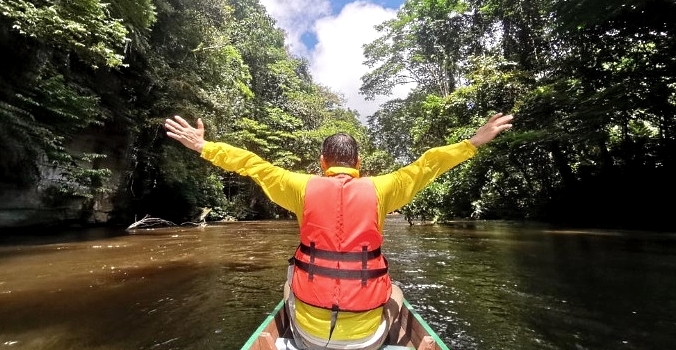
Ben, the German manager at Mulu Marriott Resort on the fringe of the national park, said: I have hosted countless of international visitors during the past four years, and each and every of them has been deeply fascinated by the virgin rainforest. They have even promised to come back with their children and grandchildren one day! Having said that, Malaysians don't seem to know this Mulu too well. As a matter of fact, the sharp-edged rocks pictured on the back of our RM100 notes are the Mulu Pinnacles here! It is not that unfamiliar after all, and to have a close encounter with this 528 square kilometer national park is never that inconceivable at all!
Notably, Mulu National Park is a world-renowned Natural Heritage site right in our own country, and a top destination for any trip to Sarawak! Don't you feel excited reading my story up till this point? Come let's go together!
(Lee San is Founder and Group Executive Chairman of Apple Vacations. He has traveled to 132 countries, six continents, and enjoys sharing his travel stories and insights. He has also authored five books.)
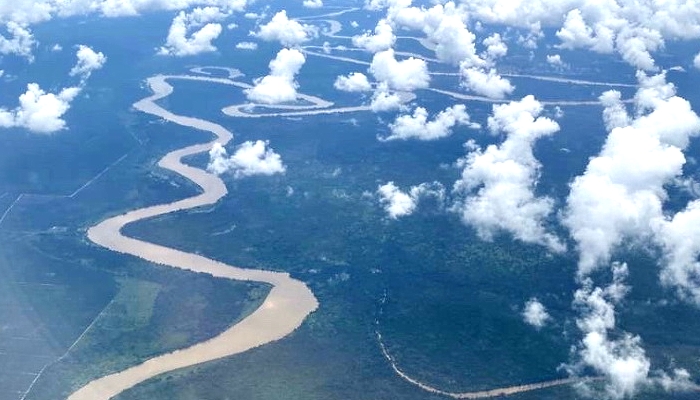
ADVERTISEMENT
ADVERTISEMENT










